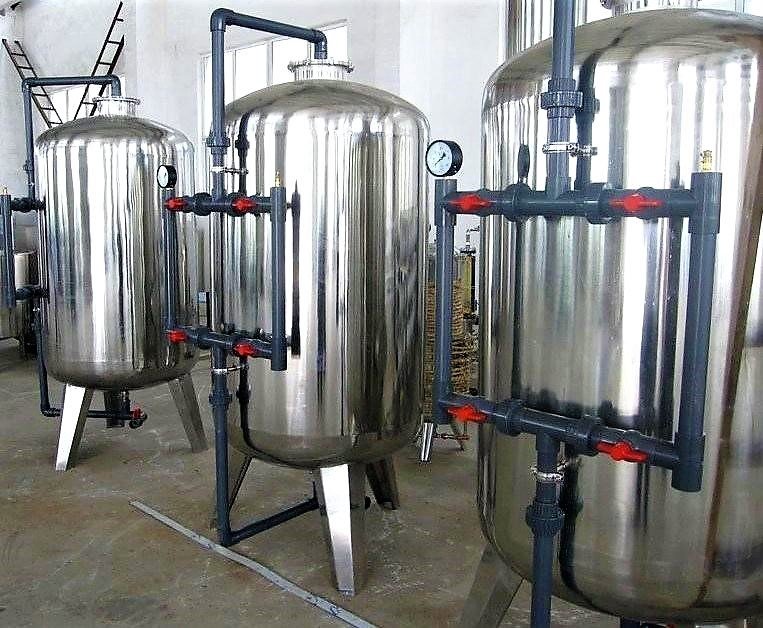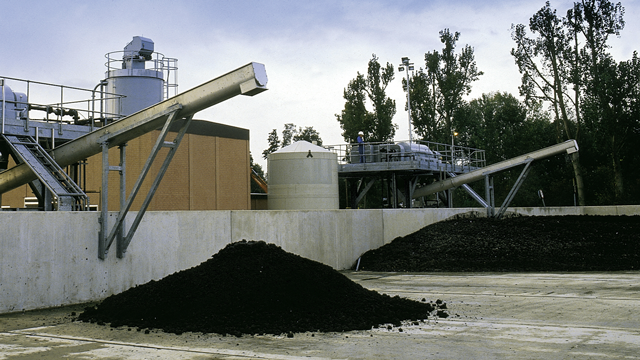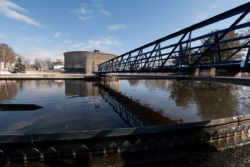Carbon Adsorption In Wastewater Treatment

Carbon Adsorption in Wastewater Treatment: Understanding Mechanisms, Applications, and Future Prospects
Introduction
Water, an essential resource for life and industrial processes, often becomes contaminated through human activities, necessitating effective treatment methods to ensure its reuse and environmental compliance. One of these effective methods is carbon adsorption, an established and efficient technique for removing organic pollutants from wastewater. This article delves into the various aspects of carbon adsorption in wastewater treatment, exploring its mechanisms, applications, advantages, challenges, and future trends.
Mechanisms of Carbon Adsorption
The Nature of Activated Carbon
Activated carbon, a form of carbon processed to have small, low-volume pores, is the primary medium used for adsorption. These pores increase the surface area available for adsorption, making activated carbon highly effective. It is characterized by a myriad of pores of varying sizes, categorized into micropores (<2 nm), mesopores (2-50 nm), and macropores (>50 nm). The broader the range of pore sizes, the more versatile the activated carbon in capturing pollutants of different molecular sizes.
Adsorption Process
Carbon adsorption operates on the principle of physical adsorption (physisorption) and, to a lesser extent, chemical adsorption (chemisorption). Physisorption involves the adherence of pollutants to the carbon surfaces via weak Van der Waals forces, which are reversible. Chemisorption involves stronger covalent or ionic bonding and is usually irreversible.
-
- Physisorption: Predominantly responsible for the capturing of organic pollutants, such as dyes, pharmaceuticals, and various chemical compounds.
-
- Chemisorption: Useful for binding specific contaminants, often requiring chemically modified activated carbon tailored to target specific pollutants.
Factors Influencing Adsorption
Several factors influence the performance of carbon adsorption, including:
-
- Surface Area and Pore Distribution: Higher surface areas and optimal pore size distribution enhance adsorption efficiency.
-
- Particle Size: Smaller activated carbon particles increase the adsorption rate due to a higher surface-area-to-volume ratio.
-
- Temperature: Higher temperatures can reduce adsorption capacity by causing desorption or limiting physisorption.
-
- pH: Solution pH affects the ionization state of pollutants and the surface charge of activated carbon.
-
- Contact Time: Longer contact times increase adsorption up to a saturation point.
-
- Concentration of Contaminants: Higher contaminant concentrations often increase the adsorption rate but not always the capacity.
Applications of Carbon Adsorption in Wastewater Treatment
Industrial Effluents
-
- Textile Industry: Activated carbon removes color and toxic dyes from wastewater, which are otherwise difficult to degrade using biological treatment methods.
-
- Pharmaceutical Industry: Pharmaceuticals and personal care products are ubiquitous in wastewater, requiring advanced treatment like carbon adsorption for effective removal.
-
- Chemical Manufacturing: Numerous organic chemicals, including pesticides and chlorinated solvents, can be effectively reduced using activated carbon adsorption.
Municipal Wastewater
Municipal wastewater harbors various contaminants, including organics, pharmaceuticals, and endocrine-disrupting chemicals. Activated carbon adsorption in tertiary treatment stages ensures the removal of these micropollutants, bringing water quality to levels safe for discharge or reuse.
Drinking Water Treatment
Activated carbon is also used in treating drinking water. It removes natural organic matter (NOM), taste and odor compounds, and disinfectant by-products, ensuring the safety and palatability of potable water.
Remediation of Contaminated Sites
Activated carbon plays a vital role in the remediation of groundwater and soil contaminated with hydrocarbons and toxic chemicals. Granular activated carbon (GAC) and powdered activated carbon (PAC) are used to absorb and immobilize pollutants, preventing their spread.
Advantages of Carbon Adsorption
High Efficiency
Activated carbon boasts an impressive capacity for organic contaminant removal, often achieving purities exceeding 99%. Its ability to handle a broad spectrum of pollutants at various concentrations makes it versatile.
Simplicity and Flexibility
The adsorption process is relatively simple to implement and manage; it adapts well to a wide range of systems, whether in batch or continuous operations.
Regeneration and Reusability
Activated carbon can often be regenerated and reused, reducing operational costs and environmental footprints. Thermal regeneration, chemical treatment, and steam regeneration are common methods employed to restore spent carbon.
Compatibility
Carbon adsorption can be paired effortlessly with other treatment technologies, such as biological treatments, coagulation-flocculation, and membrane filtration, to enhance overall system efficiency.
Challenges and Limitations
Costs
The cost of high-quality activated carbon and its regeneration can be substantial. Additionally, handling and disposal of spent carbon containing hazardous contaminants pose added costs and regulatory challenges.
Applicability to Inorganics
While highly effective for organic compounds, activated carbon is less efficient in adsorbing inorganic pollutants. Thus, it often requires pretreatment or combined treatment strategies.
Competition and Fouling
Competing substances in wastewater can clog the pores of activated carbon, leading to reduced efficiency. This phenomenon, known as fouling, necessitates frequent monitoring and regeneration of the carbon material.
Limited Bed Life
The saturation of activated carbon necessitates periodic replacement or regeneration, limiting its bed life and creating operational complexities.
Advances and Innovations in Carbon Adsorption
Modified Activated Carbons
Researchers are continuously improving activated carbon by introducing chemical modifications to enhance adsorption capacities for specific pollutants. Functional groups can be added to target specific contaminants, improving selectivity and efficiency.
Nanotechnology
Nanotechnology offers potential breakthroughs via the creation of nanostructured activated carbons. These materials possess exceptional surface area and reactive sites, significantly boosting adsorption performance.
Carbon Composites
Composite materials, combining activated carbon with other materials like polymers, metals, and clays, offer enhanced mechanical properties and tailored adsorption characteristics for specific applications.
Integrated Treatments
The integration of activated carbon with other treatment technologies, such as advanced oxidation processes (AOPs) and membrane bio-reactors (MBRs), is being developed to enhance contaminant removal efficiency and operational robustness.
Case Studies
Case Study 1: Textile Effluent Treatment
A textile factory faced challenges with dye-rich wastewater. Implementation of GAC columns in the treatment flow achieved a significant reduction in color and toxic dye content. The system was complemented with periodic backwashing and thermal regeneration, maintaining efficiency and extending the lifespan of the activated carbon.
Case Study 2: Pharmaceuticals in Municipal Wastewater
A municipal wastewater treatment plant introduced PAC in its tertiary treatment stage to address trace pharmaceuticals. With careful monitoring and optimized dosage, the system met regulatory standards for pharmaceuticals, ensuring environmentally safe effluent.
Case Study 3: Drinking Water Safety
A city introduced GAC filtration in the drinking water supply system to control taste and odor issues and remove organic contaminants. The GAC filters achieved excellent results, consistently delivering high-quality potable water to residents.
Future Prospects
The future of carbon adsorption looks promising with ongoing research and technological advancements. Key areas of focus include improving regeneration techniques, developing novel adsorbent materials, and integrating with emerging treatment modalities.
Sustainable Practices
Sustainable practices are gaining traction. Using biomass wastes to produce activated carbon, optimizing regeneration processes, and reducing the carbon footprint of adsorption systems are vital areas of development.
Advanced Monitoring and Control
The deployment of smart monitoring and control systems, leveraging IoT and machine learning, will enhance the efficiency and reliability of activated carbon systems by providing real-time insights and adaptive control mechanisms.
Comprehensive Treatment Solutions
Future treatment frameworks will likely feature carbon adsorption as a core component within integrated treatment solutions, offering synergistic benefits and addressing a wide array of contaminants.
Conclusion
Carbon adsorption remains an indispensable technique in wastewater treatment, offering high efficiency and versatility in removing diverse organic contaminants. While challenges like costs and limited adsorption capacities for inorganics exist, advancements in material science, nanotechnology, and integrated treatment systems herald a promising future. Continued research and development, coupled with sustainable practices, will ensure that carbon adsorption remains a cornerstone in effective and environmentally responsible wastewater treatment.
The comprehensive understanding and innovative application of carbon adsorption are essential for advancing water treatment technologies, safeguarding water resources, and supporting sustainable development goals.



